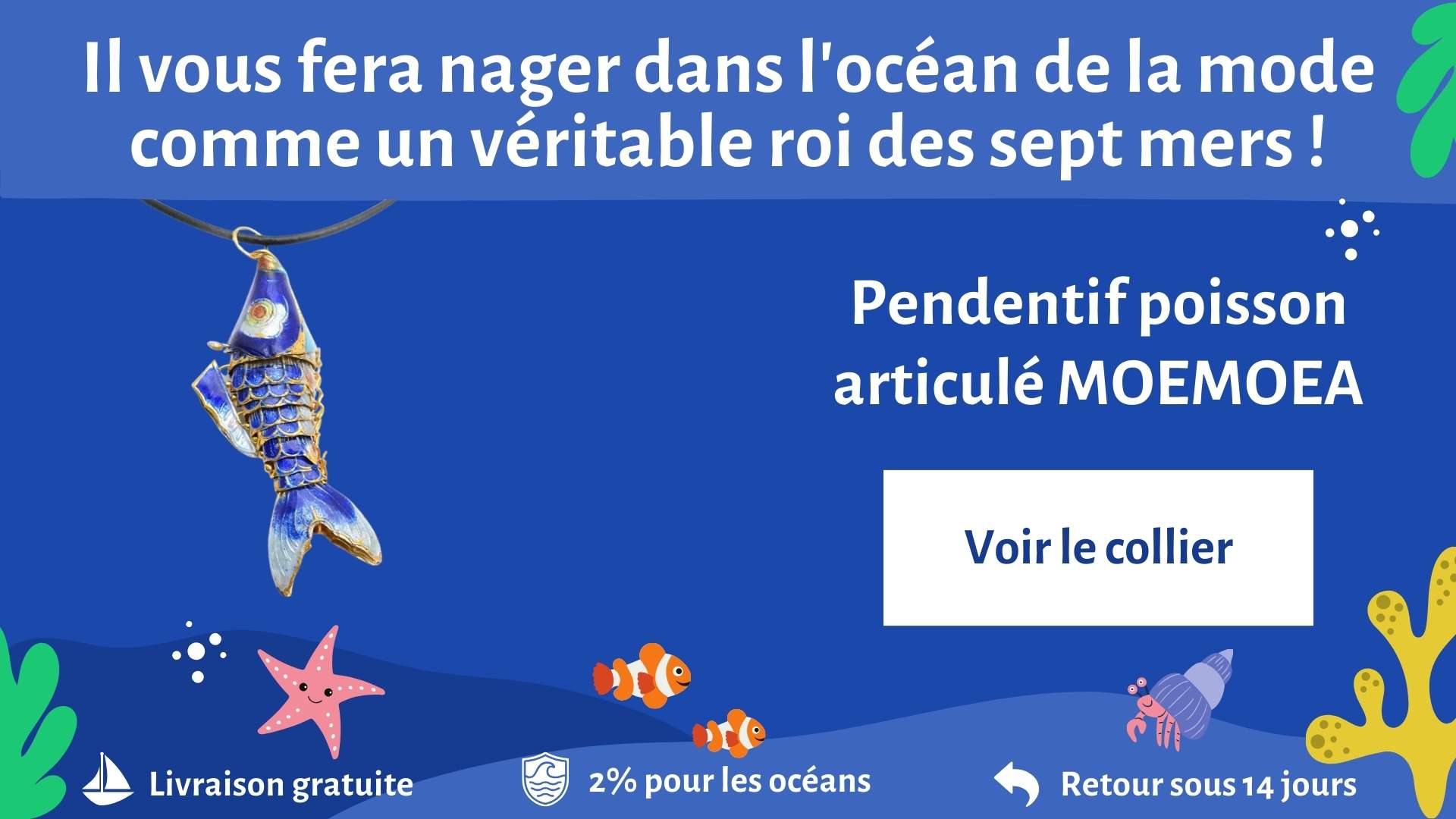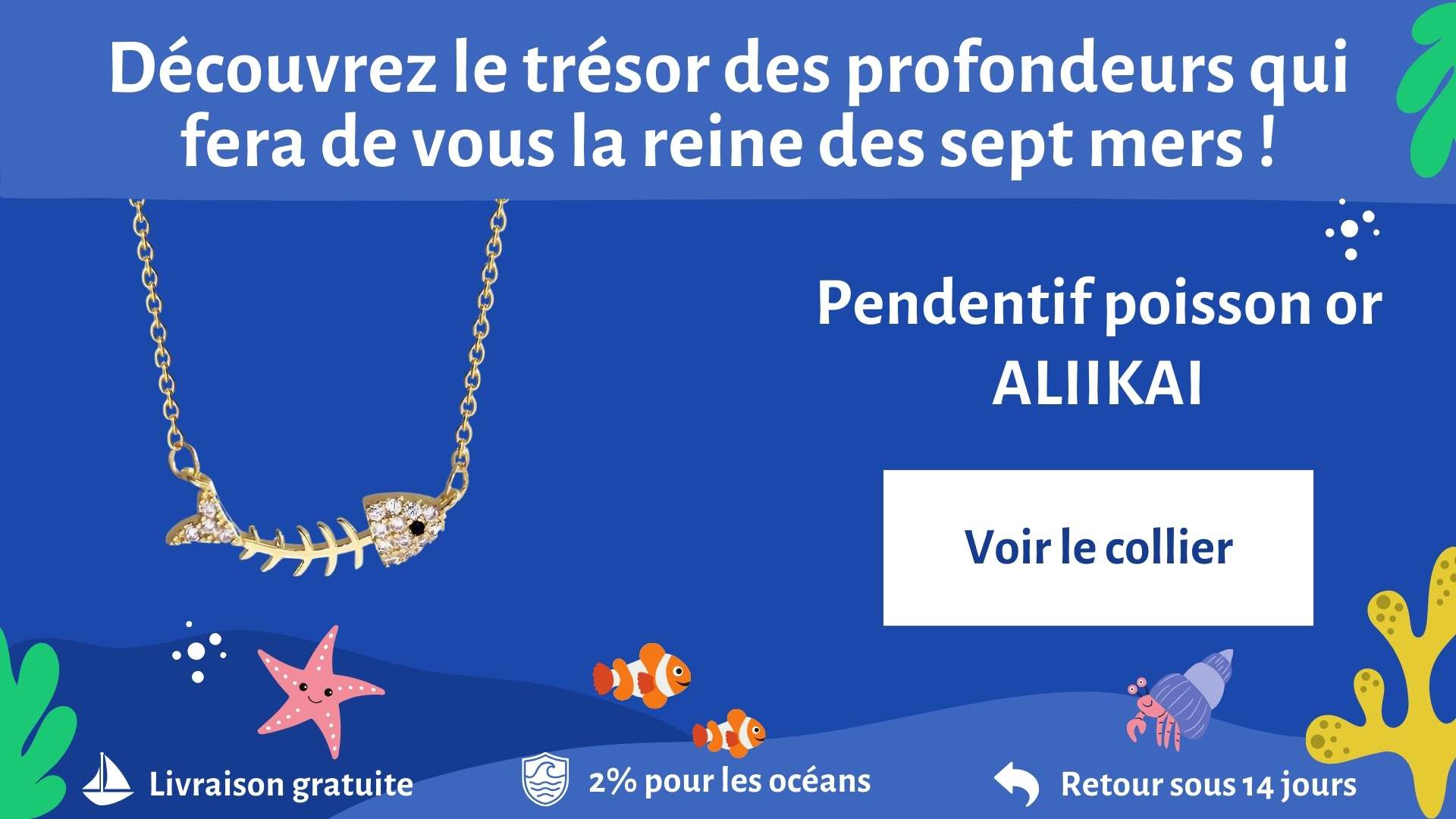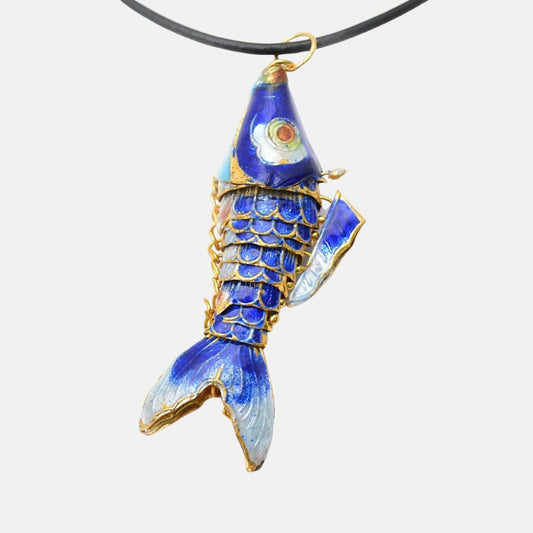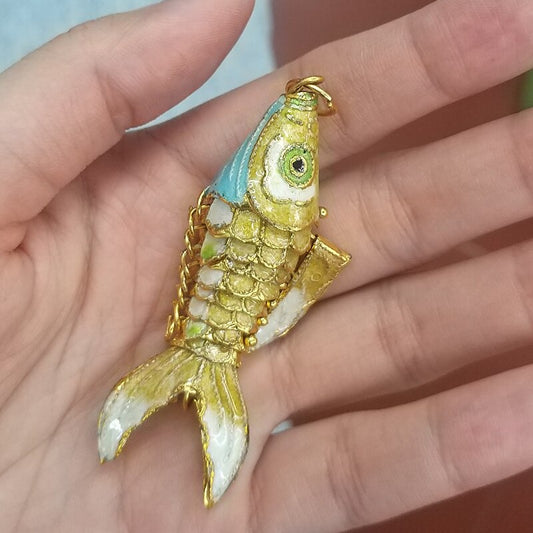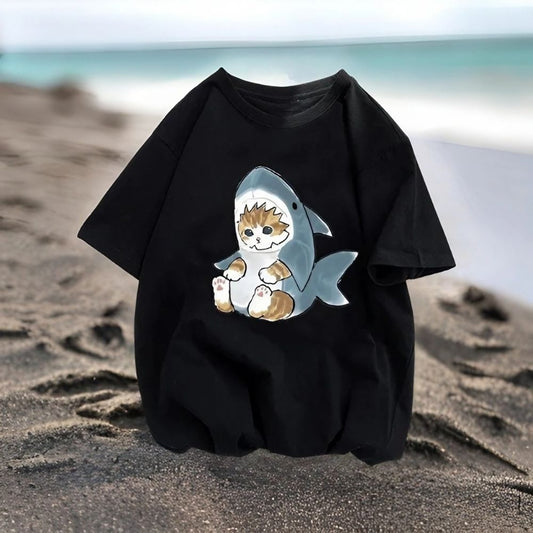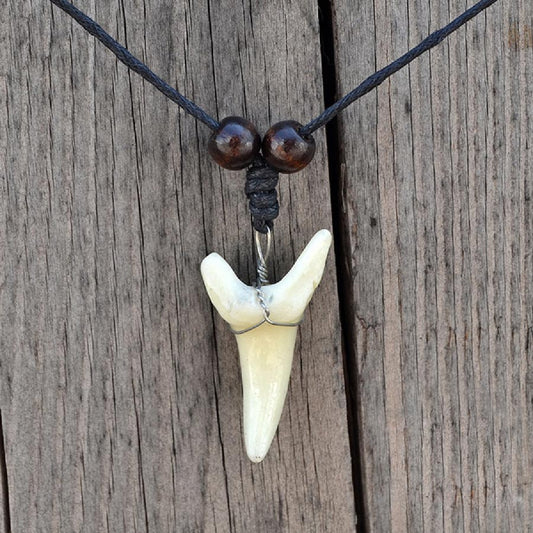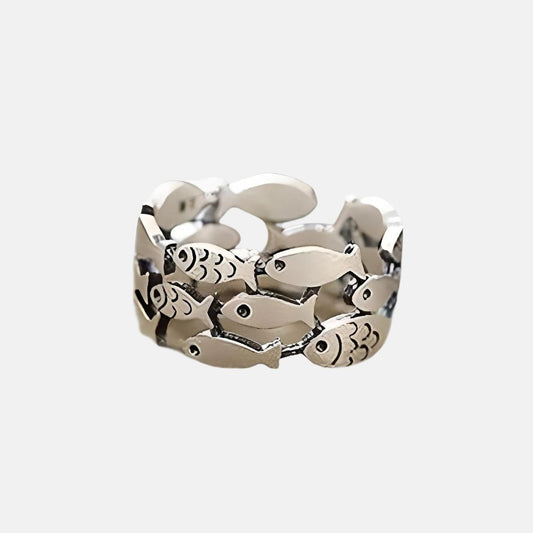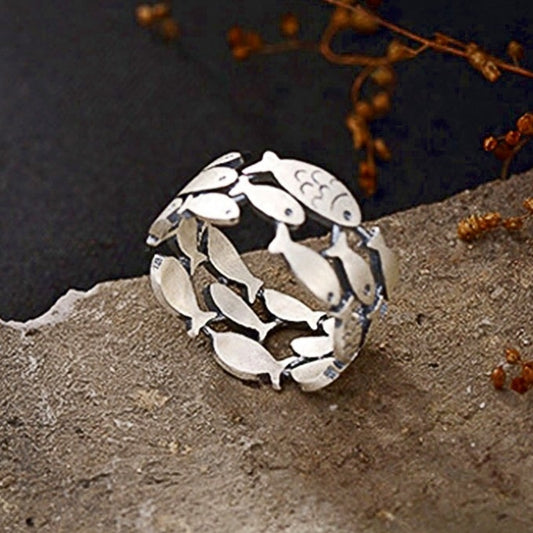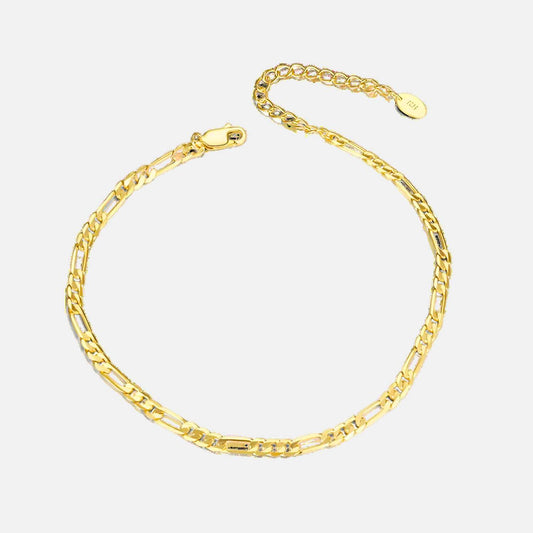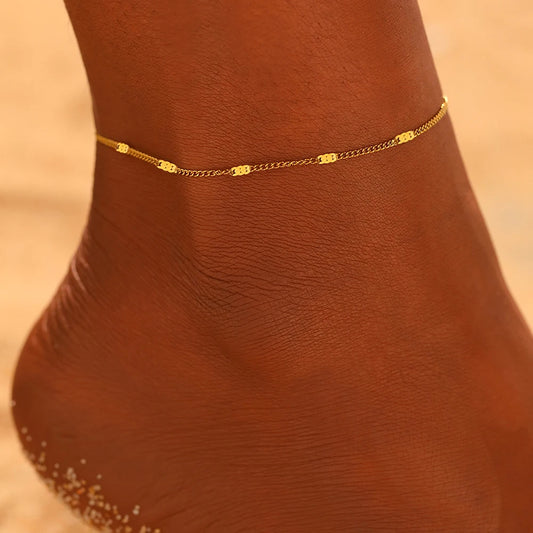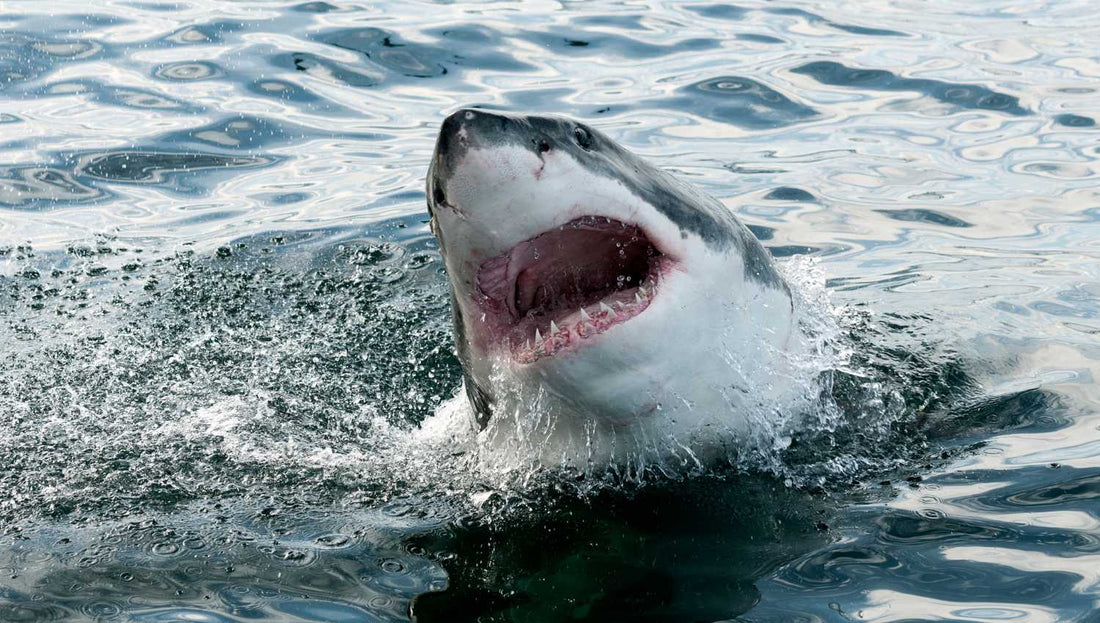
The 10 most dangerous fish in the world
More than 30,000 different species inhabit the planet's oceans and bodies of water. The beauty of many fish species is showcased in fish stores, aquariums and personal collections.
Some species, however, have darker and more terrifying aspects. Some of them can attack humans, while others can deliver a dose of poison when handled carelessly or improperly prepared for consumption.
Some species are denigrated because of their shocking appearance or fierce reputation in folklore and myth; nevertheless, one species, although cute and tiny, threatens beachgoers in a very, well, personal way.
The Stonefish
The most venomous fish in the world is the stonefish . Thanks to the spines on its dorsal fin, the stonefish can inject venom capable of killing an adult in less than an hour. In the wild, stonefish do not use their venom to capture prey, but rather to avoid predation . The venom is extremely painful and is probably very effective in deterring stronger potential predators.
The stonefish is a venomous marine fish classified in the genus Synanceja and the family Synancejidae , found in shallow waters of the tropical Indo-Pacific.
They are lethargic bottom-dwelling fish that live among rocks or corals, in mudflats and estuaries. Stocky fish with large heads and mouths, small eyes, bumpy skin covered with warty bumps and, sometimes, fleshy strips, they rest on the bottom, motionless, blending almost exactly into their environment with their shape and color.
They are dangerous fish . Difficult to see , they can, when stepped on, inject quantities of venom through the grooves in their dorsal spines. The wounds produced by these fish are intensely painful and sometimes fatal.
The Synancejidae family includes a few other species of hardy, warty fish. They are also venomous, but not as venomous as stonefish.
Why is the Stonefish very dangerous?
-
Toxic Venom : The Stonefish can inject toxic venom through its backbones, which can cause severe pain, vomiting, nausea, dizziness, and even temporary paralysis.
-
Potentially Fatal Stings: Some species of Stonefish can produce venom that is potentially fatal to humans, especially those who are allergic or have weakened immune systems.
-
Accidental Stings : People who swim or walk barefoot on coral reefs can be accidentally stung by Stonefish dorsal spines, which can be very painful and potentially dangerous.
-
Worsening of Existing Medical Conditions : People who suffer from heart disease or other serious medical conditions may be at greater risk of serious complications following a Stonefish sting.
-
Allergic reactions : Some people may develop serious allergic reactions, such as throat swelling and difficulty breathing, following a stonefish sting.
The Ostracion cubicus
The Ostracion cubicus closely resembles the pufferfish. Their size varies between 20 and 50 cm, depending on the species, and they generally live in rocky and coral reefs of the Indian , Pacific , and Atlantic Oceans . They are distinguished by their box -shaped bodies and the honeycomb patterns on their skin.
It feeds mainly on algae , worms and small fish and has an incredible defense mechanism to ward off predators. They release a toxin called ostracitoxin through their skin into the surrounding water, which is toxic to anything nearby.
This toxin can be particularly harmful to humans because it breaks down red blood cells . Additionally, some boxfish are fatal if eaten raw. However, most people prefer to avoid eating them entirely due to their resemblance to pufferfish.
Why is Ostracion cubicus very dangerous?
-
Protective spines : This fish has rigid, sharp spines that can seriously injure a person if they come into contact with them. Thorns can cause cuts, pain and infections.
-
Toxicity : Some species of Ostracion cubicus can produce toxins that can be harmful to humans if ingested or come into contact with skin.
-
Bite : Although this fish is not considered aggressive, it can bite if touched or approached in a threatening manner. Bites can be painful and can lead to infection.
-
Diseases : Aquarium fish can carry diseases that can be transmitted to other fish and even humans. It is therefore important to take precautions to avoid contamination.
The electric eel
The electric eel (Electrophorus electricus) is an elongated South American fish that produces a powerful electrical discharge to stun its prey, usually other fish.
Long, cylindrical, scaleless, and usually gray-brown in color (sometimes with a red underside), the electric eel can grow up to 2.75 meters (9 feet) and weigh 22 kg (48.5 pounds). The tail region constitutes approximately four-fifths of the electric eel's total length.
It is bordered on its underside by a wavy anal fin which is used to propel the fish. Despite its name, it is not a true eel, but is related to characin fish , which include piranhas and neon tetras.
The electric eel is one of the main aquatic predators of the whitewater flooded forest known as varzea. In a study of fish from a typical varzea, electric eels comprised more than 70% of the fish biomass .
The electric eel is a lethargic creature that prefers fresh water with low current, where it comes to the surface every few minutes to suck in air. The electric eel's mouth is rich in blood vessels that allow it to use the mouth as a lung.
The electric eel's penchant for shocking its prey may have evolved to protect its sensitive mouth from injury by struggling, often spiny fish. The shocked prey is stunned long enough to be sucked through the mouth directly into the stomach.
Sometimes the electric eel doesn't bother to stun its prey and just swallows it faster than it can react. The eel's electrical discharges can be used to prevent prey from escaping or to induce a twitch response in hidden prey, causing them to reveal their position.
The tail region contains the electrical organs, which are derived from muscle tissue served by spinal nerves, and which discharge 300 to 650 volts – a charge powerful enough to shake humans. These organs can also be used to help the creature navigate and communicate with other electric eels.
The puffer fish
The pufferfish , also called pufferfish or blowfish, is one of a group of about 90 species of fish in the family Tetraodontidae , known for their ability, when disturbed, to inflate themselves so greatly of air and water that they take a globular shape.
Puffins are found in warm and temperate regions around the world, primarily in the sea but also, in some cases, in brackish or fresh water. They have tough, usually prickly skin and fused teeth that form a beak-like structure with a slit in the center of each jaw.
The largest puffins are around 90 cm long, but most are much smaller. Many species are toxic ; a highly toxic substance, tetraodontoxin , is particularly concentrated in internal organs .
Although this substance can cause death, puffers are sometimes used as food . In Japan, where the fish are called fugu , they must be carefully cleaned and prepared by a specially trained chef.
Why are puffer fish very dangerous?
-
Poison : Puffer fish contain a poison called tetrodotoxin, which can cause paralysis and even death if ingested.
-
Stinging Fin : The pectoral fins of puffer fish can sting, which can cause severe pain and swelling.
-
Misrecognition : Pufferfish can be easily confused with other edible fish species , which can lead to accidental ingestion.
-
Potential side effects : Even from consuming a small amount of puffer fish, side effects can be serious and include vomiting, diarrhea, headaches and dizziness.
-
Risk to Children and Pets : Children and pets are at greater risk of accidentally ingesting puffer fish due to their curiosity and non-cautious behavior.
The red lionfish
Lionfish (Pterois ) are one of several species of Indo - Pacific showy fish in the scorpionfish family, Scorpaenidae (order Scorpaeniformes).
They are known for their venomous fin spines, which are capable of producing painful, but rarely fatal, puncture wounds. These fish have enlarged pectoral fins and elongated dorsal spines, and each species bears a distinctive pattern of bold, zebra stripes.
When disturbed, the fish spread and display their fins and, if pushed further, they present and attack with their dorsal spines. One of the best- known species is the red lionfish (Pterois volitans), an impressive fish sometimes kept by fish enthusiasts.
It has red, brown and white stripes and reaches a length of around 30 cm. The red lionfish is native to the reef ecosystems of the South Pacific. By the early 21st century, the species had become established in reef ecosystems along the eastern seaboard of the United States, the Gulf of Mexico, and the Caribbean Sea.
Wildlife managers suspect the lionfish were deliberately released by pet owners into the ocean along the Atlantic coast.
Why are red lionfish very dangerous?
-
Poison : Red lionfish can produce and store poison in their spiny glands, which can be potentially fatal if ingested.
-
Stinging : The spines of red lionfish can sting, which can cause severe pain and inflammation. Bites can also transmit bacterial infections.
-
Allergies : Some people may develop an allergic reaction after being bitten or coming into contact with red lionfish, which can cause serious symptoms such as difficulty breathing.
-
Environmental impact : Red lionfish are considered an invasive species in many marine ecosystems, which can cause serious disruption to other local species.
The Candiru
The candiru , (Vandellia cirrhosa), is a scaleless parasitic catfish of the family Trichomycteridae found in the Amazon River region. It is translucent and eel-like, and it grows to a length of about 2.5 cm (1 inch). The candiru feeds on blood and is often found in the gill cavities of other fish.
It also sometimes attacks humans and has been known to enter the urethra of bathers and swimming animals . Once in the passage, it raises the short spines on its gill covers and can thus cause inflammation, hemorrhage, or even death of the victim.
Why the Candiru is very dangerous?
-
Ability to enter the urinary tract: Candiru can enter the urinary tract of humans, which can cause severe pain and potentially serious infections.
-
Habit of feeding on blood : The Candiru feeds on blood, and can therefore cause significant and potentially fatal bleeding if it attaches to a vital organ.
-
Difficulty in Removal : Once it has attached itself to a host, the Candiru can be very difficult to remove, which can lead to additional complications.
-
Imposing size: The Candiru can reach considerable sizes, which can make it difficult to extract without causing significant damage to the host.
-
Lack of treatment: There is currently no specific treatment for Candiru bites, which can make managing the consequences of the bite more difficult.
The Great White Shark
The white shark (Carcharodon carcharias), also called the great white shark or white pointer , is perhaps the fish that needs no introduction, as it is one of the most powerful and potentially dangerous predatory sharks in the world.
Star of films such as Jaws (1975), the white shark is much criticized and feared by the public; however, surprisingly little is understood about his life and behavior. Based on the fossil record, the modern species has existed for approximately 18 to 12 million years , during the mid-Miocene era, but its ancestors can be traced back at least to the Eocene era (approximately 56 to 34 million years ).
In areas where they are most common, white sharks are responsible for many provoked, and sometimes fatal, attacks on swimmers , divers, surfers , kayakers , and even small boats.
A white shark tends to inflict a single bite on its human victim and then retreats. In many cases, however, the shark rarely returns for a second bite. If the victim suffers a moderate bite, they may have time to get to safety .
On the other hand, in the event of a significant bite, serious damage to tissues and organs can lead to the death of the victim. A study of white shark attacks off the western United States found that about 7% of attacks were fatal , but data from other locations, such as South Africa, show lower mortality rates by more than 20% .
Mortality rates of up to 60% have been recorded in attacks in Australian waters . Many researchers say attacks on humans are due to the shark's curiosity .
On the other hand, other authorities say that these attacks may be due to the fact that the shark confuses humans with its natural prey , such as seals and sea lions. It is also possible that white sharks intend to attack humans where their usual prey is scarce.
Why the great white shark is very dangerous?
-
Impressive size : The great white shark can reach up to 6 meters in length and weigh more than 2 tonnes. Its massive size can cause considerable damage if attacked.
-
Sharp Teeth : The great white shark has razor-sharp teeth that allow it to shred its prey with ease.
-
Fast swimming speed : The great white shark is capable of swimming at speeds of up to 60 km/h, making it capable of easily overtaking its prey.
-
Territorial Behavior : The great white shark is considered a territorial predator that can become aggressive when it feels threatened or feels at home in its territory.
-
Misidentifications : Great white sharks are often involved in incidents with humans due to misidentifications. Surfers and swimmers can be mistaken for potential prey by the shark due to their silhouette close to that of its natural prey.
-
Favorite food : The great white shark is an opportunistic predator that preys on various animal species, including dolphins, seals, whales and sea turtles. Humans can become accidental prey when the shark mistakes them for its prey natural.
The moray eel
There are probably more than 80 species of moray eels , and they are found throughout tropical and subtropical seas , where they live in shallow water among reefs and rocks and hide in crevices .
The moray eel can be distinguished from other eels by its small, rounded gill openings and the general absence of pectoral fins. Its skin is thick, smooth and devoid of scales, while its mouth is wide and its jaws are equipped with strong and sharp teeth, which allow it to seize and hold its prey (mainly other fish) but also to inflict serious injury on enemies, including humans .
They only attack humans when they are disturbed, but then they can be very vicious. Moray eels generally grow no larger than 1.5 meters (5 feet), however, there is one exception, the Pacific species Thyrsoidea macrurus , which can reach a length of 3.5 meters (11.5 feet). . Although eaten in some areas, moray eel flesh can be toxic and cause illness or even death.
In some parts of the world, moray eel flesh is eaten , although it can be toxic and cause serious illness or even death . A species of moray eel, Muraena helena, found in the Mediterranean, was a popular delicacy among the ancient Romans, who cultivated it in seaside ponds.
Why is the Moray eel very dangerous?
-
Sharp Teeth : Moray eels have sharp, cutting teeth that can easily bite and cause serious injury.
-
Soft Body : Moray eels have soft, flexible bodies, allowing them to easily slip through caves and reefs, making swimming near them dangerous.
-
Aggressive behavior : Some species of moray eels can become aggressive when they feel threatened or when searching for food.
-
Venom : Some species of moray eels can inject toxic venom through their teeth when they bite, which can cause severe pain, paralysis and even death.
The Tiger Fish
Tigerfish , which include several species, are so named because of their pugnacity when captured, their fierce predatory habits, or their appearance.
In the fresh waters of Africa, tigerfish of the genus Hydrocynus (sometimes Hydrocyon) are admired game fish of the Characidae family (order Cypriniformes). They are marked, depending on the species, with one or more dark longitudinal stripes and are fast, voracious, salmon-shaped carnivores, with dagger -shaped teeth that protrude when the mouth is closed.
There are about five species ; the largest (H. goliath) can measure more than 1.8 meters long and weigh more than 57 kg. The smallest, H. vittatus, is considered one of the best game fish in the world.
In the Indo-Pacific, marine and freshwater tigerfishes of the family Theraponidae (order Perciformes) are rather small and usually marked with sharp stripes. The three-banded tigerfish (Therapon jarbua) is a common, vertically striped species that measures approximately 30 cm. It has sharp spines on its gill covers, which can injure an unwary handler .
Why are tiger fish very dangerous?
-
Life-threatening bite : Tigerfish have sharp, cutting teeth that can cause serious injury if bitten.
-
Potent venom : Some species of tiger fish have venom glands and can inject a potentially lethal dose of venom when they bite.
-
Aggressive Behavior : Tigerfish can become very aggressive when they feel threatened or seek to protect their territory.
-
Imposing size : Tigerfish can reach considerable size, making them formidable for divers and fishermen.
-
Dangerous Habitat: Tigerfish can live in shallow water, making them accessible to humans. Additionally, they can also be encountered in shark-infested waters, which adds to their potential danger.
The Piranha
The piranha, also known as the caribbean or piraya, is one of more than 60 types of sharp-toothed predatory fish found in the rivers and lakes of South America. His reputation for ferocity is often overrated. In some films, such as Piranha (1978), the piranha is depicted as an insatiable predator. However, the majority of species are scavengers or plant feeders .
Colors vary from silver with an orange underside to almost complete black. These common fish have deep bodies, jagged bellies, a large, usually blunt head, and powerful jaws bearing sharp triangular teeth that meet in a scissor bite.
The piranha range extends from northern Argentina to Colombia , but it is in the Amazon River that they are most diverse, with 20 different species. The red-bellied piranha (Pygocentrus nattereri), is best known for its powerful jaws and sharp teeth.
During periods of low water, this species, which can measure up to 50 cm long, hunts in groups of more than 100 fish. Multiple groups may converge in a feeding frenzy if a large animal is attacked, although this is rare.
Red-bellied piranhas prefer prey that are only slightly larger than themselves or smaller. Typically, a group of red-bellied piranhas will disperse to look for prey. When located, the attacking scout signals the others.
This is likely done acoustically, as piranhas have excellent hearing . Everyone in the group rushes to grab a bite, then swims away to make way for the others.
The lobe - legged piranha (P. denticulate), found primarily in the Orinoco basin and tributaries of the lower Amazon, and the San Francisco piranha (P. piraya), a species native to the San Francisco River in Brazil, can also pose a threat to humans.
In reality, the majority of piranha species are never responsible for the deaths of large animals, and incidents of piranha attacks on humans are very rare. Although piranhas are attracted to the smell of blood , most species feed more than they kill.
A dozen species called whiskered piranhas (genus Catoprion) survive solely by feeding on bits torn off the fins and scales of other fish, which then swim free to fully heal.
Why are piranha very dangerous?
-
Bite : Piranhas have sharp teeth and a powerful bite, which can cause serious injury to humans.
-
In groups : Piranhas are often in groups and can become aggressive when they feel threatened or when looking for food.
-
Swimmers : Swimmers can be an easy target for piranhas, especially if they are injured or weakened.
-
Polluted Water : Water pollution can make piranhas more aggressive and more prone to attack.
-
Spawning Period : During the spawning period, piranhas may become more aggressive due to competition for resources and space.

